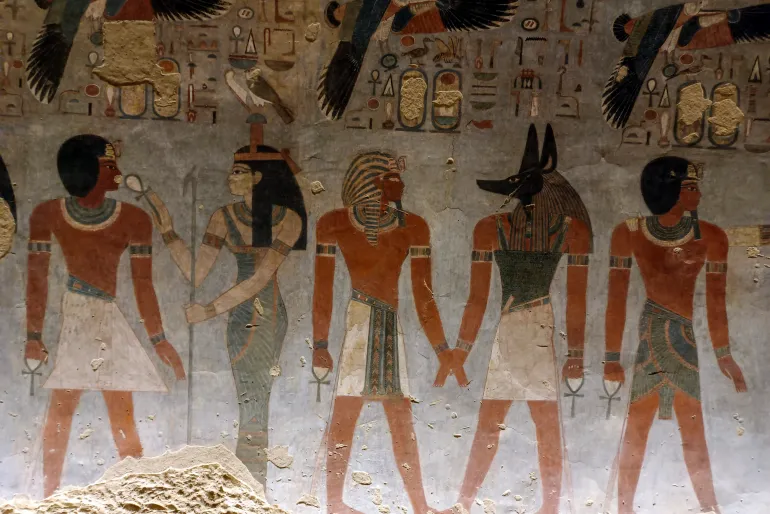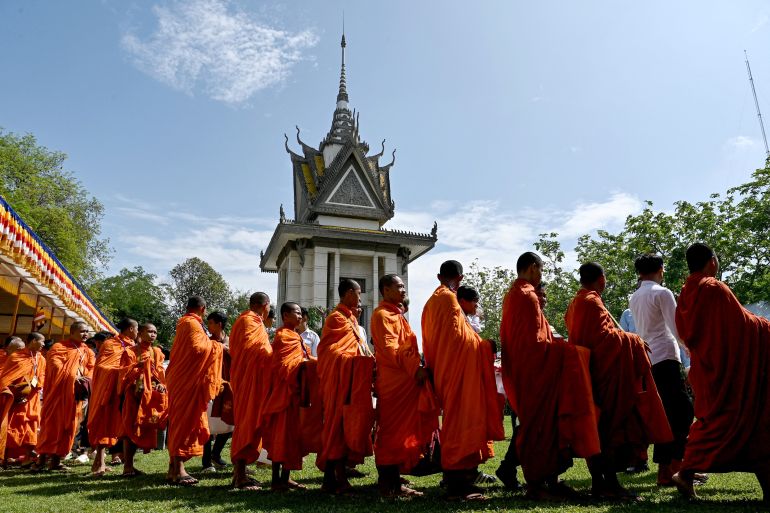UNESCO board backs Egypt’s Khaled el-Enany as its next chief | United Nations News
The Egyptologist and former minister of antiquities will be the first Arab to lead the UN’s cultural organisation.
The board of the United Nations Educational, Scientific and Cultural Organization (UNESCO) has nominated Egypt’s Khaled el-Enany, an academic and former minister of tourism and antiquities, as its next head, ahead of the organisation’s general conference next month.
If confirmed, el-Enany, a professor of Egyptology at Cairo’s Helwan University, would become the first Arab director-general of the organisation, which oversees the UN’s handling of cultural heritage, alongside international cooperation efforts in other areas including science and education.
Recommended Stories
list of 4 itemsend of list
The former minister campaigned widely for the role, which was also contested by Firmin Edouard Matoko of the Democratic Republic of Congo, and Gabriela Ramos of Mexico, who withdrew from the race earlier this year.
The decision by the board, which represents 58 of the agency’s 194 member states, is expected to be finalised at a meeting of UNESCO’s general assembly in Uzbekistan next month.
The organisation’s next leader will replace France’s former Minister of Culture Audrey Azoulay who has served in the role since 2017.
Azoulay notably helped lead a high-profile effort to rebuild the ancient Iraqi city of Mosul after it was devastated during fighting between the ISIL (ISIS) armed group and combined US and Iraqi forces.
El-Enany’s nomination comes as the Paris-based UN body continues to face political challenges, including in its work of choosing which cultural heritage sites to help preserve from threats including wars, pollution and climate change.
The organisation is also set to face an eight percent funding cut at the end of 2026, when the United States again formally withdraws its membership, along with its funding.
It will be the second time that the Trump administration has pulled the US out from the UN cultural organisation in protest at its members’ decision to admit the State of Palestine as a member in 2011.
The State of Palestine is also a Permanent Observer State member of the United Nations General Assembly, where more than 80 percent of member states now back its full membership.
Explaining the US decision to withdraw again, US State Department spokesperson Tammy Bruce claimed that allowing Palestine to remain a member of UNESCO had “contributed to the proliferation of anti-Israel rhetoric within the organisation.”
Israel left UNESCO at the end of 2018.
The organisation has been remotely monitoring damage to cultural heritage sites in the Gaza Strip during Israel’s war, and says that it has verified damage to a total of 110 sites since October 7, 2023, including 13 religious sites, 77 buildings of historical or artistic interest, three depositories of movable cultural property, nine monuments, one museum and seven archeological sites.

El-Enani, 54, worked earlier in his career as a tour guide at ancient Egyptian sites, earned a doctorate in France and became a famed Egyptologist prior to serving in government.
He was minister of antiquities, and later tourism, under Egypt’s President Abdel Fattah el-Sisi from 2016 to 2022.
El-Sisi welcomed the news of el-Enani’s nomination, calling the nomination a ‘’historic achievement that shall be added to Egypt’s diplomatic and cultural record and to the achievements of the Arab and African peoples.”
During his tenure in government, el-Enani oversaw the start of mega-tourism projects including the National Museum of Egyptian Civilisation in Cairo, the Jewish Temple and multiple ancient discoveries that helped revive the country’s battered tourism sector.
He is expected to focus on UNESCO’s cultural programs, and has pledged to continue UNESCO’s work to fight anti-Semitism and religious intolerance according to the Associated Press news agency.




